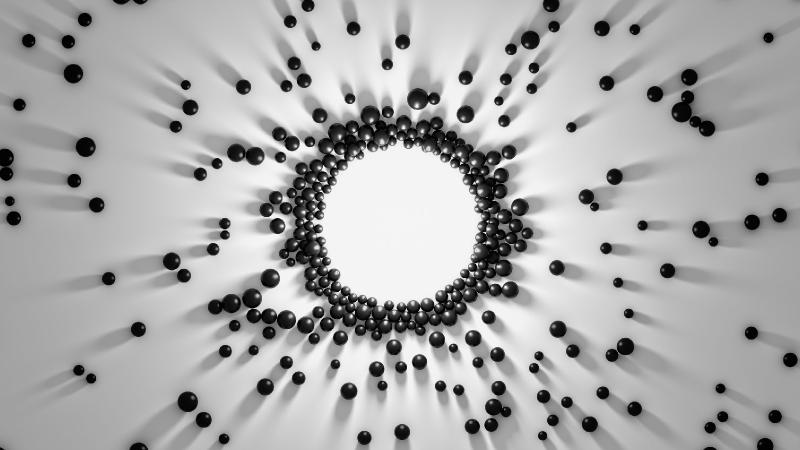Scientists Smashed Atom into Atom and Unleashed a Magnetic Monster
By: Darren Orf (Popular Mechanics)


Actual results weren't quite as sensational as the headline suggests. Particle physicists are a bit unconventional so the tiniest anomaly can shatter their reality.

The universe is a place of intense magnetic extremes. Magnetars, for example, can generate magnetic fields in excess of 100 trillion gauss—as a point of comparison, the magnet on your fridge produces a field of only 100 gauss of so. This highly intense magnetism can distort the star's shape to such a degree that the star pulses gravitational waves out into the universe.
Sounds intense, right? Well, this spacetime-altering magnetic field doesn't even come close to the power of fields generated in the quantum world.
Using the Relativistic Heavy Ion Collider in Upton, New York, a new study conducted by Brookhaven National Laboratory as part of the Solenoidal Tracker at RHIC (STAR) experiment recorded a "super strong" magnetic field within a quark-gluon plasma formed after an off-center collision of heavy atomic nuclei. According to the results, which were published in the journal Physical Review X last week, this magnetic field was some 10,000 times stronger than a magnetar.
"Those fast-moving positive charges should generate a very strong magnetic field, predicted to be 10 18 gauss," co-author Gang Wang, a STAR physicist from the University of California, Los Angeles said in a press statement. "This is probably the strongest magnetic field in our universe."
Using the house-sized RHIC, scientists tracked the trajectories of heavy-ion collisions (such as gold) after experiencing an off-center collision. Theories have predicted that such a collision should create a strong magnetic field—some positively charged protons and neutral neutrons not involved in the collision would swirl in the resulting quark-gluon plasma as they pass at near the speed of light.
Ruling out other causes for such a strong magnetic field, the researchers spotted a "charge-dependent deflection" that can only be caused by a phenomenon known as Faraday induction (named for the famous 19th century electromagnetism pioneer). This specific induction can only be caused by the rapid decay of a strong magnetic field. The interaction influenced the trajectory of charged particles that scientists were then able to measure.

And that's a good thing, because unlike magnetars that just churn out power magnetic fields for their entire lifetimes, these ultra-strong magnetic fields resulting from off-center collisions only occur for ten millionths of a billionth of a billionth of a second. This makes it impossible to capture on its own, but its influence can be seen in the resulting scatter of subatomic particles.
"We can infer the value of the conductivity from our measurement of the collective motion" co-author Diyu Shen, a STAR physicist at Fudan University in China said in a press statement. "The extent to which the particles are deflected relates directly to the strength of the electromagnetic field and the conductivity in the QGP—and no one has measured the conductivity of QGP before."
Understanding the properties of quark-gluon plasma helps physicists explore what the universe was like mere moments after the Big Bang, before free-roaming quarks and gluons coalesced into hadrons—the protons and neutrons that form atoms. These collisions should also help experts probe the complexity of the chirality magnetic effect (CME).
So, while the universe certainly produces its fair share of intense magnetic fields, the quantum world invites you to hold its beer.







For engineers these announcements are typically a let down. The breathtaking announcement never answers the obvious 'and' that should follow.
BTW, for those who have read the article to the end, the complete saying is 'hold my beer and watch this'. The physicist missed the obvious 'and' again.